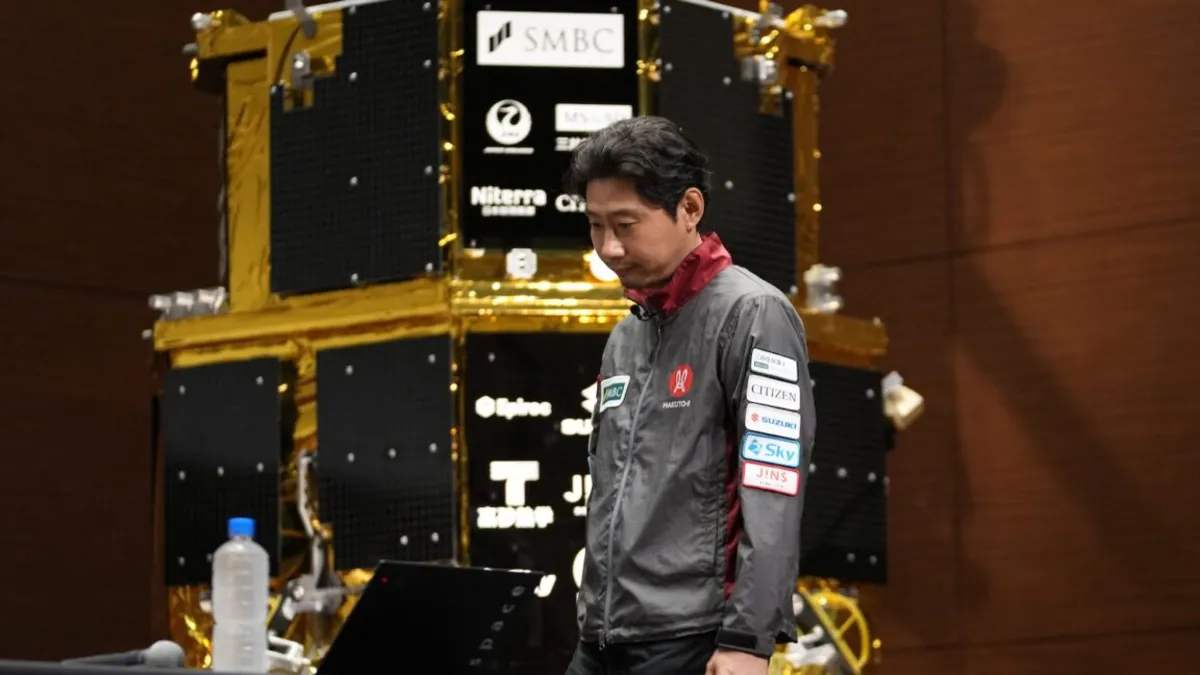
A robotic lander developed by the Japanese company ispace tragically crashed on the Moon's surface on Thursday, destroying a small rover and several key experiments intended to showcase how future missions might mine and harvest lunar resources. Ground teams at ispace's mission control center in Tokyo lost contact with the Resilience lunar lander moments before its planned touchdown in a region known as Mare Frigoris, or the Sea of Cold, a basaltic plain located in the Moon's northern hemisphere. A few hours later, ispace officials confirmed what many observers had feared: the mission was lost.
This incident marks the second consecutive failure for ispace in its attempts to land on the Moon. “We wanted to make Mission 2 a success, but unfortunately we haven’t been able to land,” stated Takeshi Hakamada, the company's founder and CEO. Ryo Ujiie, ispace's chief technology officer, reported that the final data received from the Resilience lander indicated it was descending too fast for a safe landing, with an altitude of approximately 630 feet (192 meters). "The deceleration was not enough," Ujiie told reporters during a press conference.
The company revealed in a press release that a laser rangefinder, a crucial device for measuring the lander's altitude, encountered delays in providing valid measurement values. This rangefinder emits light pulses toward the Moon during descent and calculates the time it takes for the reflection to return, which informs the lander's guidance system of its altitude above the lunar surface. Unfortunately, something malfunctioned in this system, resulting in the lander failing to decelerate sufficiently for a safe lunar landing.
Given the circumstances, ispace currently assumes that the lander likely performed a hard landing on the lunar surface. Controllers attempted to send a command to reboot the lander in hopes of reestablishing communication, but the Resilience spacecraft remained silent. “Given that there is currently no prospect of a successful lunar landing, our top priority is to swiftly analyze the telemetry data we have obtained thus far,” Hakamada emphasized in a statement. He assured stakeholders that they would work diligently to identify the cause of the failure.
The name Hakuto, which means "white rabbit" in Japanese, is a nod to ispace's origins in 2010 as a contender for the Google Lunar X-Prize. This competition offered a $20 million prize to the first privately funded team to successfully land a lander on the Moon. Although the prize was discontinued in 2018 without a winner, Hakamada persevered, raising additional funding and relaunching the program under the name Hakuto-R. The name Resilience reflects the company's determination to overcome obstacles in lunar exploration.
Despite making it closer to the Moon than its previous attempt in 2023, Thursday's failure is a significant setback for Hakamada's project. “We know it’s hard, but the important point is it’s not impossible,” he said. “The US private companies have succeeded in landing, and also JAXA in Japan has succeeded in landing, so it’s not impossible.”
In April 2023, ispace's first lander crashed due to a similar altitude measurement issue, believing it was on the lunar surface while it was actually hovering at an altitude of 3 miles (5 kilometers). The spacecraft ran out of fuel and fell before impacting the Moon. Engineers had attributed the altitude-measurement problem to software issues. During its descent, the lander passed over a 10,000-foot-tall (3,000-meter) cliff, causing the computer to misinterpret the sudden altitude change.
Ujiie indicated that Thursday's failure mode resembled that of the first mission, although preliminary reviews showed different behaviors from the Resilience lander, which was equipped with a new type of laser rangefinder after the previous supplier ceased production of the device. “From Mission 1 to Mission 2, we improved the software and our approach to the landing site,” Ujiie explained. “We see different phenomena from Mission 1, so we have to do more analysis to provide concrete answers.”
If the Resilience spacecraft had successfully landed, it would have deployed a small rover developed by ispace's European subsidiary, partially funded by the Luxembourg Space Agency with support from the European Space Agency. The rover was designed to collect lunar soil samples and capture images of them. Additionally, NASA had contracted with ispace to purchase the lunar soil as a proof of concept for future acquisitions from commercial mining companies.
The lander also carried a water electrolyzer experiment aimed at demonstrating technologies capable of splitting water molecules into hydrogen and oxygen, essential resources for future lunar bases. Other payloads included cameras, a food production experiment, a radiation monitor, and a Swedish art initiative called MoonHouse.
The Resilience lander launched in January aboard a SpaceX Falcon 9 rocket, alongside a commercial Moon lander named Blue Ghost from Firefly Aerospace, which successfully landed on March 2. ispace's trajectory was slower and followed a lower-energy, more fuel-efficient path. Thursday’s landing attempt was notable as the seventh instance of a privately developed Moon lander attempting a controlled touchdown.
As ispace prepares for its third landing attempt scheduled for 2027, the company will collaborate with its US subsidiary and Draper Laboratory, which has a contract with NASA for lunar experiments. Despite the setbacks, Hakamada remains committed to ispace's vision, aiming to restore trust and confidence as they work toward their next mission.
“It’s too early to know how the failure on Thursday might impact our next mission,” said Jumpei Nozaki, ispace's director and CFO. “But we believe we still have a competitive edge in the market for lunar missions.” Hakamada added, “There were times I almost cried, but I need to lead this company with a strong will to move forward.”